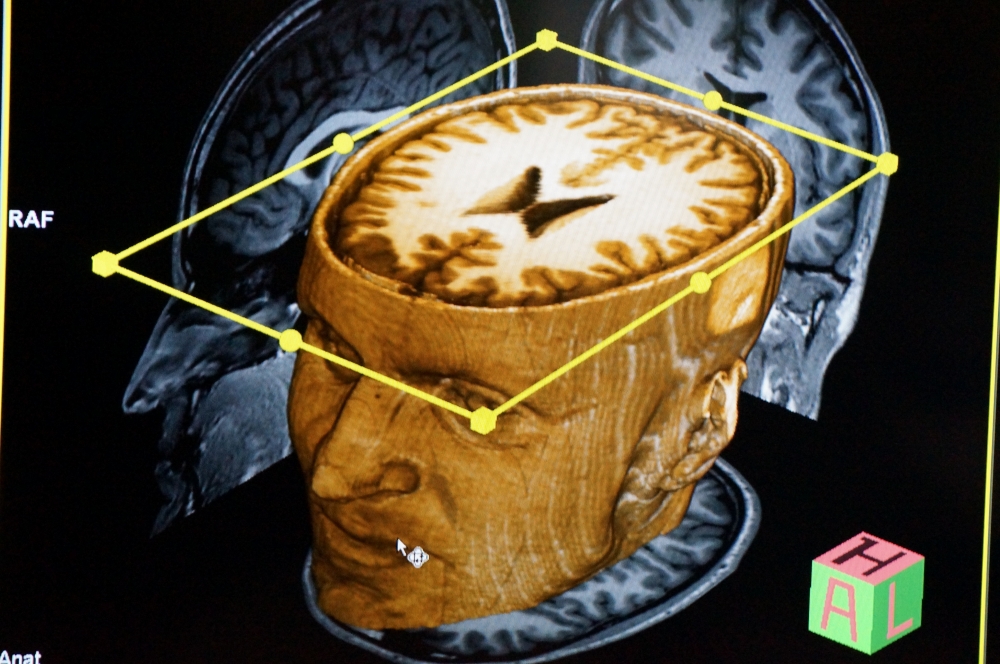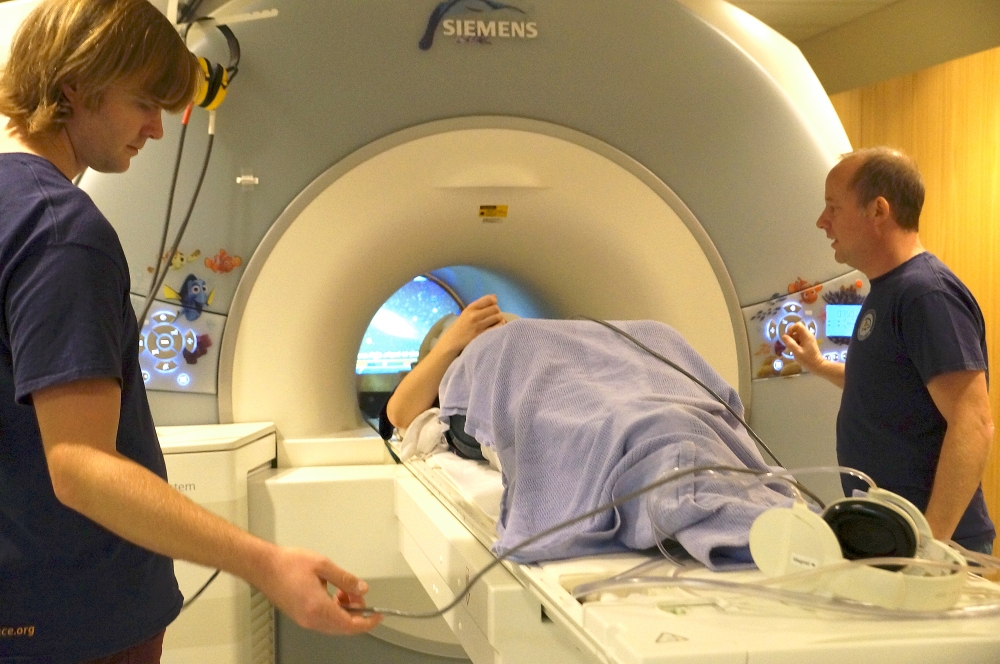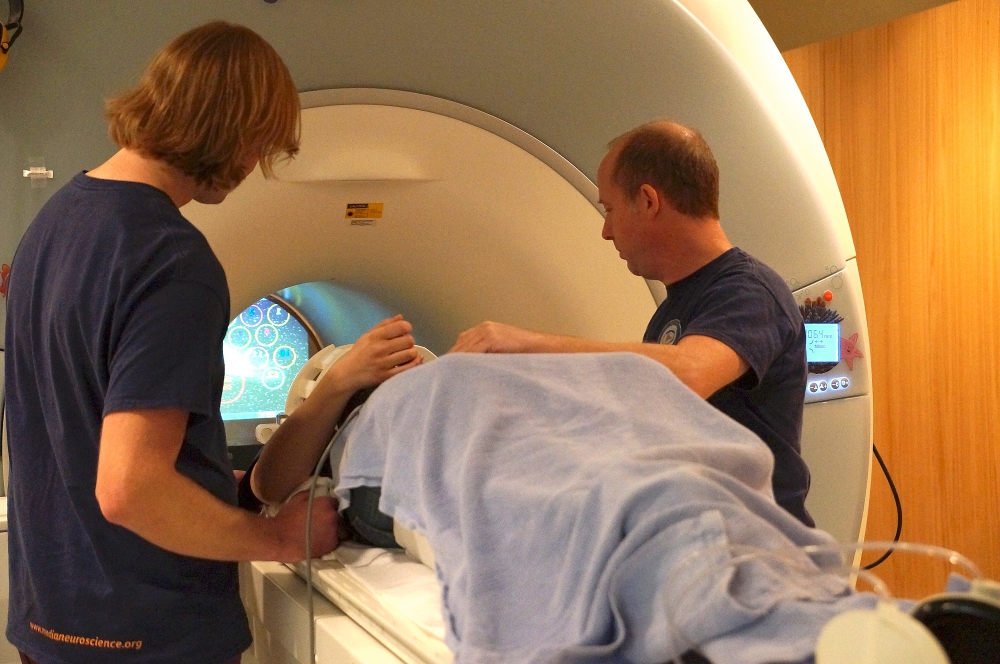Lab Combines Communication, Technology and Neuroscience
Among the happiest guinea pigs at UC Santa Barbara are those who play video games and watch soap operas in the name of science. They are at the center of serious research being conducted at the campus’s Media Neuroscience Lab (MNL), where neuroscientific methods are applied to answer pressing questions in communication research. The cutting-edge lab is the brainchild of René Weber, an associate professor in the Department of Communication.
Weber got the idea for the lab at the 2009 meeting of the International Communication Association (ICA), where he identified a coalescing group ready to embrace neuroscience as a tool for exploring the relationship between brain function and communication. Weber, chair of the ICA’s Mass Communication Division — the association’s largest division with 1,200 members — is also one of five neuromarketing experts accredited by the Advertising Research Foundation.
“The time has come when communication scholars can study communication phenomena with brain science,” Weber said. “Our mission is to honestly delineate what communication questions can or cannot be answered with neuroscience and to investigate theoretically focused and methodologically rigorous research questions that bridge communication, media science and neuroscience.”
The MNL focuses on four areas of study: media violence and aggression; narratives and moral judgment; persuasion neuroscience; and method and theory development.
In examining how aggression and violence play out in the human brain, the lab uses a virtual environment to create conditions similar to those in the real world. “There is some transfer going on from the virtual to the real world, which we take advantage of to reproduce violent behaviors,” said Weber. “We simulate multiple dilemmas in a virtual environment and then look at how the human brain processes this.”
Some test subjects play video games and are monitored for their reactions to differences in their opponents’ voice pitches and how these differences shape their perceptions of an opponent’s aggressive intention and physical or social dominance. Others play video games to give researchers a better sense of the neural basis of aggression as well as positive affective states such as flow.
The lab also asks test subjects to watch soap operas in an fMRI scanner so that researchers can understand the impact of different narratives — the spoken or written account of connected events — on moral judgment and attitudes. By studying narratives, the lab explores how these accounts work, the implications of certain types of narratives, how people evaluate different kinds of moral transgressions in narratives and why it is possible to explain intention in narratives linked to moral transgression in some domains but not in others.
“If I tell you a story about a consensual sexual relationship without consequences, your response might be neutral, but if I told you the people involved were siblings, your reaction would be negative,” Weber explained. “In the second scenario, intentions and consequences don’t really count anymore. People have a natural moral intuition that a sexual relationship among siblings is wrong.
“So we are interested in how moral intuitions in domains such as fairness, care, loyalty, authority, purity, etc. shape the perceptions and the effect of everyday narratives in fictional and nonfictional drama,” he added. “Can we analyze narratives in terms of moral transgressions and reward or punishment for moral transgressions, and predict how people will evaluate narratives in a particular context? Can we predict how likely people are to change or strengthen their attitudes based on particular narratives?”
The MNL’s research in persuasion neuroscience — which delves into the mechanisms of message-processing among audiences — is in its infancy. One question Weber anticipates the lab exploring is whether neuroscientific theories and methods can help to identify which messages are more or less persuasive and which messages are more or less likely to result in counterarguing — arguments that stand in opposition to one another.
“It’s a complex literature and we still haven’t figured out some of the basic questions,” he said. “Once we figure out how the human brain encodes the persuasive content of a message — a monumental task on its own — I’d like to explore if it is indeed possible to use brain responses to actually predict behavior and then reverse-engineer that to alter messages in order to optimize their ability to persuade.”
As futuristic as this sound, scholars have already begun to do just this, but Weber is well aware of the ethical implications. “In the right hands, it would be a wonderful tool for, say, helping people make better health decisions,” he said. “But you could use the same technology to persuade people to do things that are bad for their health.”
According to Weber, brain science used in conjunction with communication theory might someday be able to discern which part of an advertising message could be replaced, modified or even eliminated in order to make more effective public service announcements or commercials.
The MNL has a very particular take on the method and theory development area of its research. “Our firmly held view is that some of the best theories are supported by methodological advances,” Weber said.
Weber used the example of non-effect or statistical equivalence — the argument that taking an action or using a product results in no effect at all — to explain the kind of contributions the MNL makes to scholarly endeavors. “If you want to make a non-effect claim, such as video games do not make you more violent, it cannot be done with traditional significance testing because a nonsignificant result doesn’t tell you anything about non-effect.”
Accordingly, the MNL developed a new test for statistical equivalence and created the corresponding software (SPSS custom dialogs), which is downloadable from the lab website. “Now researchers in our field have the statistical tool to actually demonstrate evidence for equivalence,” Weber said. Other examples of the lab’s methodological innovations include monitors for heart rate and other physiological markers that require only a mobile phone with a built-in camera and flashlight.
In addition to being a research center, the MNL offers such services as brain image consulting and archival datasets, including brain imaging and self-report data. It also features an extensive research library of relevant and recent cognitive neuroscience literature.
The MNL has not only graduate student members and undergraduate research assistants but also collaborators and affiliated scholars from UCSB’s Department of Psychological and Brain Science as well as other universities in the United States and Europe.
“I am happy that we founded this lab,” Weber said. “It’s at the forefront of the media neuroscience movement. So far, we are unique in the world. No other lab is specialized exactly like ours.”










